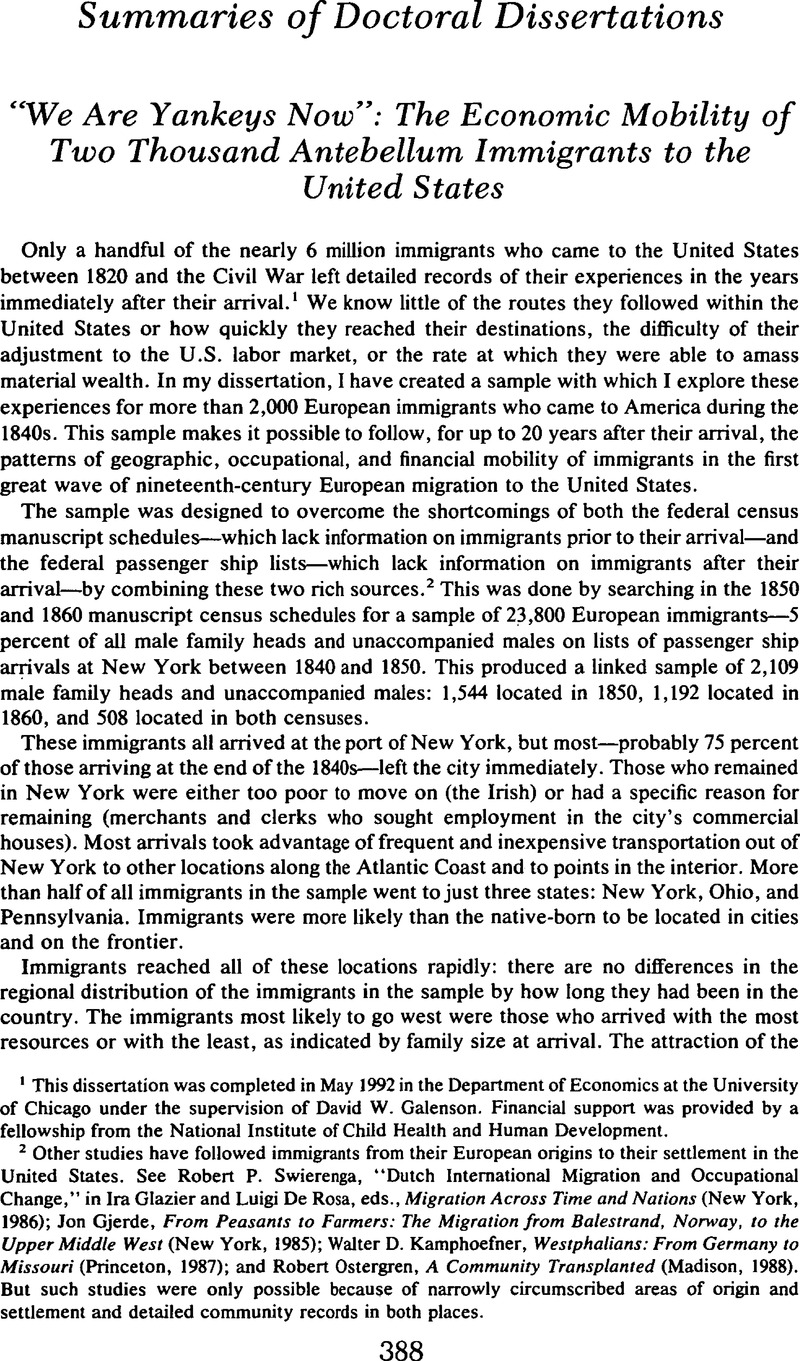Published online by Cambridge University Press: 03 March 2009

1 This dissertation was completed in May 1992 in the Department of Economics at the University of Chicago under the supervision of David W. Galenson. Financial support was provided by a fellowship from the National Institute of Child Health and Human Development.
2 Other studies have followed immigrants from their European origins to their settlement in the United States. See Swierenga, Robert P., “Dutch International Migration and Occupational Change,” in Glazier, Ira and De Rosa, Luigi, eds., Migration Across Time and Nations (New York, 1986)Google Scholar; Gjerde, Jon, From Peasants to Farmers: The Migration from Balestrand, Norway, to the Upper Middle West (New York, 1985)Google Scholar; Kamphoefner, Walter D., Westphalians: From Germany to Missouri (Princeton, 1987)Google Scholar; and Ostergren, Robert, A Community Transplanted (Madison, 1988)Google Scholar. But such studies were only possible because of narrowly circumscribed areas of origin and settlement and detailed community records in both places.
3 Galenson, David W. and Levy, Daniel S., “A Note on Biases in the Measurement of Geographic Persistence Rates,” Historical Methods, 19 (Fall 1986), pp. 636–55.CrossRefGoogle Scholar
4 Thernstrom, Stephan, Poverty and Progress: Social Mobility in a Nineteenth Century City (Cambridge, MA, 1964)Google Scholar; Thernstrom, Stephan, The Other Bostonians: Poverty and Progress in the American Metropolis, 1880–1970 (Cambridge, MA, 1973)CrossRefGoogle Scholar; and Griffen, Clyde and Griffen, Sally, Natives and Newcomers: The Ordering of Opportunity in Mid-Nineteenth-Century Poughkeepsie (Cambridge, MA, 1973).Google Scholar
5 This was true for Chicago in the 1850s. See Galenson, David W., “Economic Opportunity on the Urban Frontier: Nativity, Work, and Wealth in Early Chicago,” this Journal, 51 (09 1991), pp. 581–603.Google Scholar
6 A steeper and later-peaking age-wealth profile has also been observed for entire communities as they aged. See Pope, Clayne, “Households on the American Frontier: The Distribution of Income and Wealth in Utah, 1850–1900,” in Galenson, David W., ed., Markets in History: Economic Studies of the Past (New York, 1989), pp. 148–89Google Scholar; and Soltow, Lee, Men and Wealth in the United States, 1850–1870 (New Haven, 1975), pp. 81–82.Google Scholar